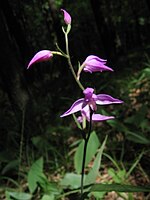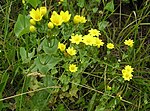Sheepscombe
PainswickUse British English from March 2015Villages in Gloucestershire

Sheepscombe is a small village in the civil parish of Painswick, in the Stroud district, in the county of Gloucestershire, England. Sheepscombe is located some 6.5 miles (10 km) south-east of the city of Gloucester, 6 miles (10 km) north-east of the town of Stroud, and 1.5 miles (2 km) east of the village of Painswick. It lies in a narrow valley, hidden behind the Cotswold scarp, and just off the A46 and B4070 roads.
Excerpt from the Wikipedia article Sheepscombe (License: CC BY-SA 3.0, Authors, Images).Sheepscombe
Geographical coordinates (GPS) Address Nearby Places Show on map
Geographical coordinates (GPS)
| Latitude | Longitude |
|---|---|
| N 51.791364 ° | E -2.155852 ° |
Address
GL6 7RQ
England, United Kingdom
Open on Google Maps










